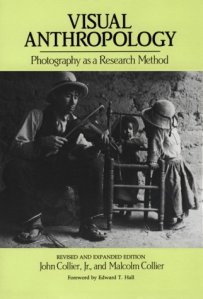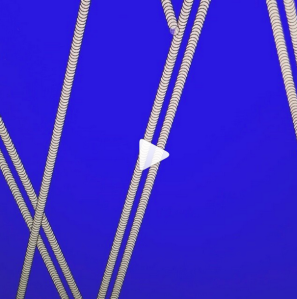The book ‘Visual Anthropology – Photography as a Research Method’ immediately appealed to me, working as I am as a professional photographer while undertaking an MA in art and artistic design. Described by Choice magazine as highly recommended, it stated “after reading this book it is unlikely that anyone would ever take a picture – or look at one – in the same way again.” This set the bar high, so I wanted to have a look at it and consider its principles, particularly as some of the research that I have done elsewhere in this blog is on or about photography or artwork.
What this book is about is observation, which is a vital tool for any artistic academic. Being able to observe and then interpret and use that observation is a large part of what being an artist is all about. As the authors state (Collier J and M., 1986, p. 5): “Photography is only a means to an end: holistic and accurate observation, for only human response can open the camera’s eye to meaningful use in research.”
Another element I found useful in my work was the way the authors describe how photography can help to find patterns in art, and how finding those patterns can then help influence one’s own work and guide one’s thinking (Collier J and M., 1986, p. 195): “Most photographic analysis is a search for patterns and the definition of their significance. What are patterns in anthropology? They appear to be the relationship among parts and the manner in which they are related to the whole structure… but in visual work these are not always clear… It is more productive to look first for patterns in the whole scope of the data and then seek detailed or statistical confirmation. The purpose of a good research design and of different procedures applied within it is to facilitate the discovery and definition of patterns.”
Although not directly related to photography, I found these principles really important as guidelines for the experimentation work that I did in relation to my Cloneography project. By looking for patterns in product formation, I could use the same or altered procedures to move forward in my artistic journey.
Within the authors’ conclusions in the book, I found a particularly interesting story, related to an archaeologist named Dr Junius Bird. He discovered some pointed stones within the Panama Canal, and was attempting to find other evidence of early settlement when he died. Despite not completing his work, his initial findings had sparked interest and, as the book states (Collier J and M., 1986, p. 205): “…his creative achievement stands; all it took was one fluted point, and scientific imagination could conceive the possibility of a whole world. Discovery is an act of creation. It is this opportunity for combination of creative and scientific approaches that is the particular promise of visual anthropology. From this… can come understanding and knowledge based on a more complete application of human intelligence and observation to the problems and promises of our time.”
There is, of course, much more to this book – it walks the readers through all elements of using photography as a research method (principles of visual research; impact of technology; practical analytical procedures; the difference between moving and still images) – but these are the most salient points in relation to my own sphere of work. I would recommend this book to anyone else who is a lover or student of the arts and particularly photography. By being more observant, one can only increase one’s ability to connect with art and by extension the world around us.
Collier, J. and Collier, M., (1986), Visual Anthropology: Photography as a Research Method, University of New Mexico Press











